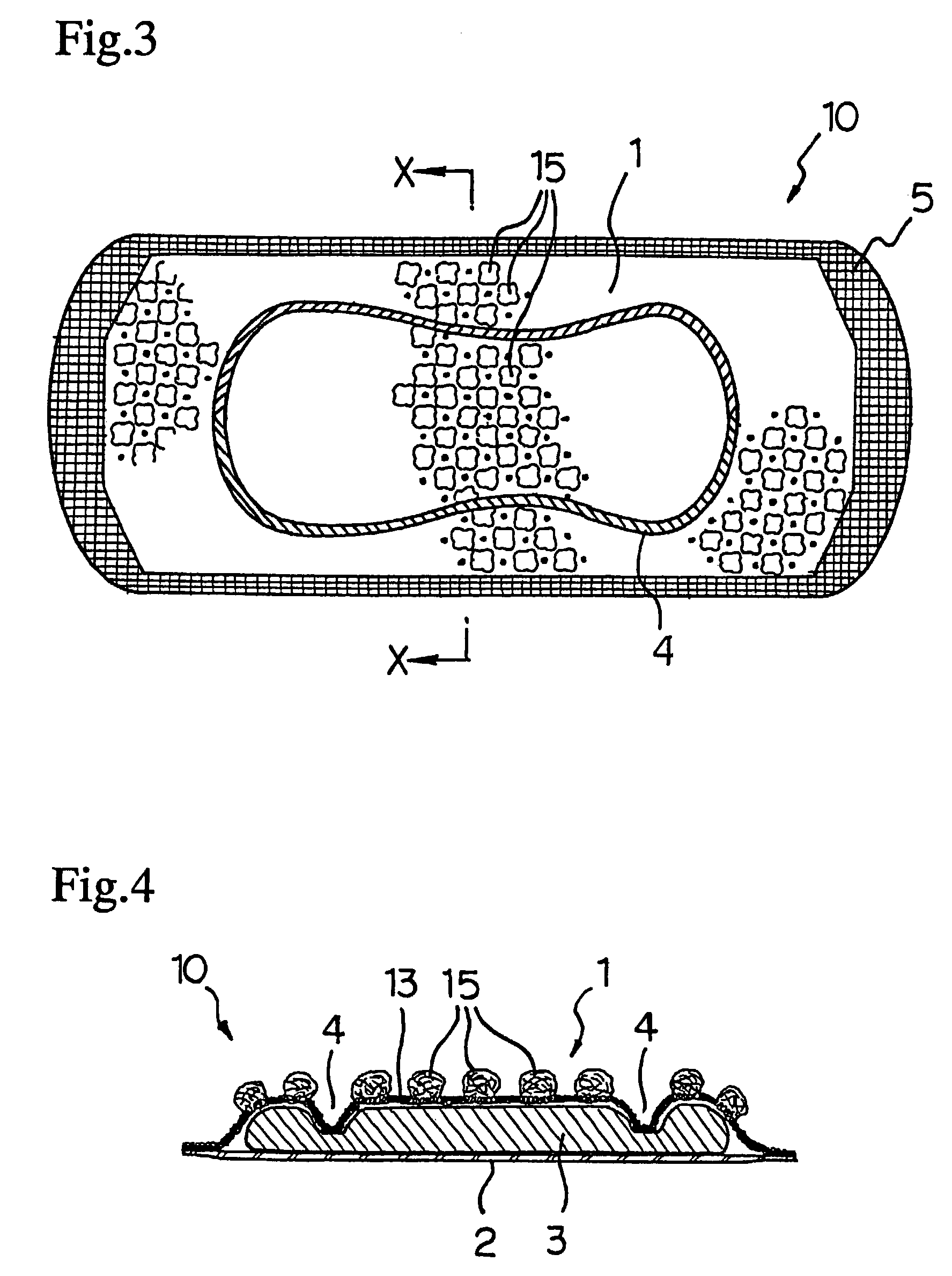Topsheet for absorbent article
a technology of absorbent articles and topsheets, which is applied in the field of absorbent articles, can solve the problems of inferior surface softness to those having nonwoven fabric topsheets, which are uncomfortable or unsanitary to users, and none of them sufficiently meet the above-mentioned requirements of absorbing performance and surface characteristics, and achieve excellent softness, small skin irritation, and sufficient absorbing performance.
- Summary
- Abstract
- Description
- Claims
- Application Information
AI Technical Summary
Benefits of technology
Problems solved by technology
Method used
Image
Examples
example 1
[0084]The present invention will now be illustrated in greater detail with reference to Examples. Unless otherwise noted, all the percents and ratios are by weight.
Preparation of Topsheet:
[0085]Thermally fusion bondable core-sheath conjugate fiber (2.2 dtex×51 mm) consisting of a polyethylene terephthalate core and a polyethylene sheath available from Daiwabo Co., Ltd. was carded into a web and heat treated at 120° C. to fusion bond the fiber intersections to prepare nonwoven fabric having a basis weight of 15 g / m2. The nonwoven fabric was subjected to hot air treatment at 70° C. to obtain bulky nonwoven fabric (first layer-forming material) having a thickness of 1 mm and an apparent density of 0.025 g / cm3.
[0086]Separately, helically self-crimping fiber CPP (2.2 dtex×51 mm, available from Daiwabo Co., Ltd.) was carded into a web having a basis weight of 35 g / m2 (second layer-forming material).
[0087]The first layer-forming material and the second layer-forming material were superpose...
example 2
[0092]A topsheet was prepared in the same manner as in Example 1, except that a bulky nonwoven fabric having a thickness of 0.9 mm, an apparent density of 0.013 g / cm3, and a basis weight of 12 g / m2 was prepared as a first layer-forming material and that the second layer-forming web partly joined with the bulky nonwoven fabric was shrunken at an area shrinkage of 30%.
example 3
[0093]A topsheet was prepared in the same manner as in Example 2, except that the percent area shrinkage was changed to 15%.
PUM
| Property | Measurement | Unit |
|---|---|---|
| apparent thickness | aaaaa | aaaaa |
| apparent thickness | aaaaa | aaaaa |
| density | aaaaa | aaaaa |
Abstract
Description
Claims
Application Information
 Login to View More
Login to View More - R&D
- Intellectual Property
- Life Sciences
- Materials
- Tech Scout
- Unparalleled Data Quality
- Higher Quality Content
- 60% Fewer Hallucinations
Browse by: Latest US Patents, China's latest patents, Technical Efficacy Thesaurus, Application Domain, Technology Topic, Popular Technical Reports.
© 2025 PatSnap. All rights reserved.Legal|Privacy policy|Modern Slavery Act Transparency Statement|Sitemap|About US| Contact US: help@patsnap.com



